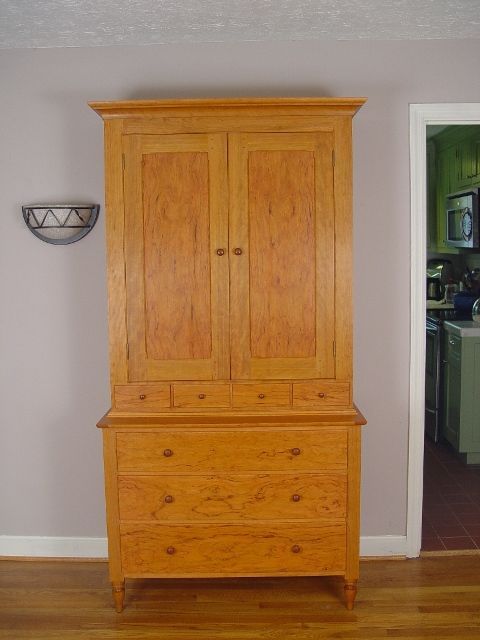Question
I'm confused. I'm in the process of building a cherry blanket chest. Almost done. Now it's time to put a finish on it. I had to use a couple different grades of cherry and have a marked color difference. I am planning on dying the lighter of the two. I've read that blotching can be minimized by sanding less, sanding more, using non-oil stain, etc. I was planning on using a wash coat of 50% sealcoat and 50% alcohol. Then I realized the dye has alcohol in it, and might degrade the wash coat. I've sanded to 220. What should I use as a wash coat?
Forum Responses
(Finishing Forum)
From contributor B:
Cherry is going to change color as it ages/becomes exposed to sun. A good idea is to place boards in a sunny spot for a week after sanding. Then make your color choices.
I think what's confusing you, is that you're mixing 2 different methods of preventing blotching. One method is to sand the wood up to a 320 grit. The wood will then absorb less color. The other is to seal the wood, which will also prevent the wood from absorbing color.
If you seal with a 50-50 mix of shellac and DNA, and then use an alcohol/dye mix, the dye has to be sprayed on. It will blend with the shellac. If you try brushing the dye on, you'll end up with a muddy mess.
Take contributor I's advice. You want to stain something, use alder. I stain alder with cherry dye stain often. It looks great. I even have pretty good luck if I stain cherry, but it is a waste. Waste of time, waste of money, and a waste of wood.
Take a look a Chris Becksvoort's work with natural cherry.
One more question. One of the above posts mentions glue sizing. How do you make that?
I work a lot of cherry and rarely if ever stain, and I disagree that when the wood is new that after time it will all somehow match. If it does not when new cut, it probably will not after time. If heartwood, it will darken, but will probably never match.
Just as important as design, joinery and finish is the selection of wood for color and grain, not to mention strategic use and placement in a piece. If you have variations in color in your work, which I assume is the case here, a light blending with dye or a toner in a seal or topcoat would be helpful.
As an example, in the photo, like most of my work in cherry, the finish is natural - a light coat of Waterlox followed by several coats of shellac in this case. The drawer fronts were carefully selected, however the top drawer grain was perfect but the color was just a little off (too light). A little dye in the seal or first coat brought it into the correct tone. After a couple of years of aging the color is still good.
My best advice is to start selecting for grain and color at the lumberyard, buy about twice what you need, considering the matching and placement of the wood throughout the construction, and you should end up with a nicely matched piece without the need to stain.

Comment from contributor A:
If you are going to continue working with cherry you will most likely want to stain it someday. My advice is to get in touch with a good finish distributor. We use ML Campbell products exclusively. Sherwin Williams has similar products as well. Forget sizing and sanding differently or conditioning your project in the sun, the best process we have found to get consistent and nearly blotch free is to use a base dye to level the color instead of a fast dry non-oil stain. This works very well with even dark colors. All that being said, for a blanket chest I would still prefer natural.